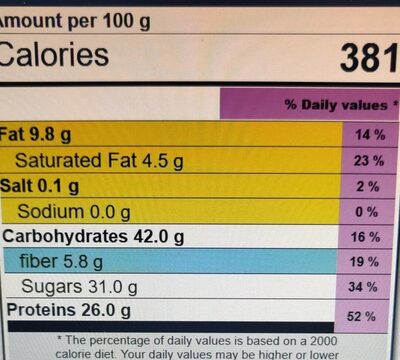Snack coco prozis - 12 x 30 g
Aquesta pàgina del producte no està completa. Podeu ajudar a completar-la editant-la i afegint-hi més dades a partir de les fotos ja disponibles, o fent-ne més amb l'aplicació de androide o iPhone / iPad. Gràcies!
×
Codi de barres: 5600380891943 (EAN / EAN-13)
Quantitat: 12 x 30 g
Marques: Prozis
Categories: Suplements dietètics, Suplements per culturisme, Barretes de proteïna
Matching with your preferences
Entorn
Empaquetament
Transport
Report a problem
Fonts de dades
Producte afegit per kiliweb
Última modificació de la pàgina del producte per foodless.
La pàgina del producte, també editada per acuario, autorotate-bot, elcoco, feat, openfoodfacts-contributors, quechoisir, roboto-app, thaialagata, yuka.RzVrTUFLQWxpY01obnNBdzRSako1UFYyK0xxamN6THVCTFUySVE9PQ, yuka.Vi8wY0NZOG5pTWNzdThZYTBnckkwOTR2eVptZ2ZIRzFLODhUSVE9PQ, yuka.sY2b0xO6T85zoF3NwEKvllx8VvXhqW7qDEbWgEzVzfykHI7Ifu95-dLrEas, yuka.sY2b0xO6T85zoF3NwEKvlmNedcDDpRz8CAHhgWmz__iLE4HmeNFe39L0b6s.











